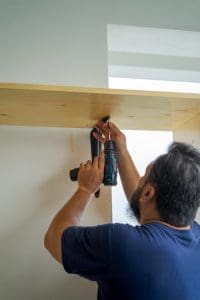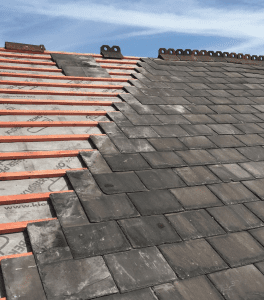Pitched roofs are a distinctive feature of homes across the UK, and their popularity has stood the test of time due to their aesthetic appeal and practical benefits. Not only do they enhance the charm and character of a property, but they also serve important functional roles, such as protecting homes from the elements and improving energy efficiency. In this article, we’ll expand on our previous discussion of flat roofs and dive into the pros, cons, and essential maintenance tips for pitched roofs, focusing on UK homeowners and their unique needs.
The Advantages of Pitched Roofs
Pitched roofs have long been favoured in the UK due to a number of distinct advantages that make them well-suited to the climate and architectural style of British homes. Let’s explore the key benefits of opting for a pitched roof.
1. Timeless Aesthetic Appeal
Pitched roofs bring an undeniable charm and elegance to homes, enhancing curb appeal and contributing to a property’s overall value. With various styles, such as gable, hip, and dormer roofs, homeowners have the flexibility to choose a design that complements their home’s architecture. Whether it’s a traditional cottage in the countryside or a modern suburban home, pitched roofs are versatile and adaptable, adding character to any structure.
2. Excellent Weather Resistance
In the UK, where rain and windy weather are frequent, pitched roofs are particularly advantageous. Their steep slopes allow water and snow to run off efficiently, reducing the risk of water pooling, which is common on flat roofs. This efficient water drainage protects the roof from leaks, reduces moisture build-up, and prevents structural damage over time. Additionally, pitched roofs are more resistant to harsh weather conditions like snow, as the incline helps distribute the weight of snow evenly, minimising the risk of collapse or damage.
3. Increased Attic and Loft Space
One of the standout benefits of a pitched roof is the additional space it provides. The steep pitch creates ample room in the attic or loft area, which can be used for storage or even converted into additional living space, such as a home office or bedroom. This extra space adds significant value to the property and offers flexibility for growing families or homeowners seeking to maximise their living areas.
4. Improved Ventilation and Energy Efficiency
Pitched roofs are known for promoting better ventilation, particularly in the attic. Natural ventilation helps regulate indoor temperatures, preventing heat from accumulating in the summer and aiding in moisture control during winter. This contributes to improved energy efficiency, as proper ventilation reduces the need for excessive heating or cooling. A well-ventilated roof also helps extend the lifespan of the roofing materials, as it prevents moisture build-up that could lead to mould or rot.
The Drawbacks of Pitched Roofs
Despite their numerous advantages, pitched roofs are not without their downsides. Homeowners should be aware of these challenges when considering a pitched roof for their property.
1. Higher Installation Costs
Pitched roofs generally require more materials, time, and labour to install compared to flat roofs. This makes the upfront installation costs higher. However, the long-term benefits, such as durability and energy efficiency, often outweigh the initial expense. For many homeowners, the investment in a pitched roof pays off over time through reduced repair costs and a longer lifespan.
2. Challenging Maintenance and Access
Due to their steep incline, pitched roofs can be more difficult to access for routine maintenance, such as cleaning gutters, inspecting for damage, or replacing tiles. Homeowners may need to hire professional roofing services to handle these tasks safely and effectively. This can add to the overall cost of maintaining the roof compared to a flat roof, where access is simpler.
3. Limited Solar Panel Installation Options
With the growing focus on renewable energy, many homeowners are considering installing solar panels. However, the steep angle of a pitched roof can sometimes limit the effectiveness of solar panels, as they may not receive optimal sunlight exposure throughout the day. That said, with modern technology and innovative mounting solutions, this challenge can be mitigated, allowing solar panels to be installed effectively on pitched roofs.
4. Vulnerability to Wind Damage
In areas exposed to strong winds, pitched roofs can be more susceptible to damage from wind uplift. The larger surface area of a pitched roof can catch the wind, potentially leading to loosened or missing tiles during storms. Proper installation and reinforcements, such as secure flashing and ridge caps, are essential to minimise this risk. Regular inspections are also critical to ensure that the roof remains in good condition after severe weather.
Essential Maintenance Tips for Pitched Roofs
Regular maintenance is key to preserving the longevity and functionality of your pitched roof. By following these maintenance tips, homeowners can prevent costly repairs and ensure their roof remains in optimal condition for years to come.
1. Conduct Regular Roof Inspections
Schedule a professional roof inspection at least once a year, ideally in the spring or autumn. Inspections should include a thorough check for damaged or missing tiles, sagging areas, cracks, and leaks. Regular inspections will help catch any potential issues early, allowing you to address them before they become major problems.
2. Keep Gutters and Downpipes Clear
Clogged gutters and downpipes can cause water to back up onto the roof, leading to leaks and water damage. Clear leaves, debris, and moss from the gutters regularly to ensure proper drainage. You can also consider installing gutter guards to reduce the frequency of cleaning and prevent debris from accumulating.
3. Trim Overhanging Trees and Branches
Overhanging trees can pose a risk to your pitched roof by depositing leaves, branches, and moss, which can block gutters and damage tiles. In stormy weather, branches may even break off and cause direct damage to the roof. Trim back any trees near the house to minimise these risks and maintain the health of your roof.
4. Replace Damaged or Missing Tiles Immediately
Even a single damaged or missing tile can allow water to seep into your home, leading to leaks and potential structural damage. It’s important to address any broken tiles as soon as they’re noticed. Always hire a professional roofer to handle tile repairs, as attempting to fix them yourself can be hazardous due to the steep slope of a pitched roof.
5. Check for Moisture in the Attic
Regularly inspect your attic for signs of moisture, such as damp insulation, water stains on the ceiling, or musty odours. These can indicate a leak or inadequate ventilation. Addressing moisture issues early will help prevent long-term damage, such as mould growth or wood rot, which can compromise the structural integrity of your home.
6. Control Moss and Algae Growth
Moss and algae can trap moisture on the roof surface, leading to tile deterioration and water damage. While these growths are common on roofs in damp climates like the UK, they should be removed to prevent further issues. It’s best to hire a professional roofer to handle moss and algae removal, as they will use the appropriate tools and techniques to protect your roof from damage.
Conclusion: Long-Term Benefits of Pitched Roofs for UK Homeowners
Pitched roofs offer a wide range of advantages for UK homeowners, from aesthetic appeal and enhanced attic space to excellent weather resistance and improved energy efficiency. However, they also come with certain challenges, such as higher installation costs and more complex maintenance requirements. By following the maintenance tips outlined in this article, homeowners can ensure their pitched roof remains in top condition and continues to protect their property for decades to come.




